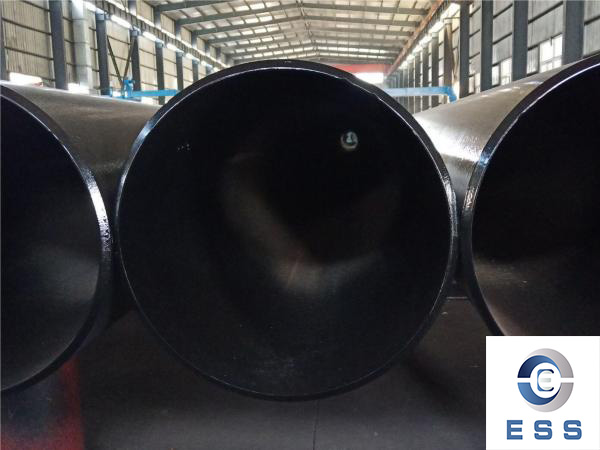How to prolong the service life of ERW pipe?
Introduction:
Electric Resistance Welded (ERW) pipes are widely used in various industries for the transportation of fluids, gases, and solids. They offer a cost-effective and efficient solution, but like any other infrastructure, they require proper care and maintenance to ensure their longevity. This article aims to provide valuable insights and practical tips on how to extend the lifespan of ERW pipes, minimizing the risk of corrosion, mechanical failures, and other issues that can affect their performance and service life.

Understanding ERW Pipes:
Before delving into the ways to enhance the lifespan of ERW pipes, it is important to have a basic understanding of their construction. ERW pipes are manufactured through a process that involves the formation of a welded seam using electric resistance welding. These pipes are made from rolled steel coils, which are shaped into pipes and welded longitudinally. ERW pipes offer a smooth interior surface, high dimensional accuracy, and excellent strength, making them suitable for various applications.
Proper Installation:
The installation process plays a crucial role in determining the lifespan of ERW pipes. Here are some key factors to consider during installation:
a) Soil Analysis: Conduct a thorough analysis of the soil conditions to determine its corrosive potential. Different soil types can have varying levels of acidity or moisture content, which may accelerate corrosion. Taking appropriate measures, such as coating the pipes or using corrosion-resistant materials, can significantly extend their lifespan.
b) Trench Preparation: Ensure that the trench is properly prepared to provide adequate support and protection to the pipes. This includes removing sharp objects, rocks, or debris that could damage the pipe coating or cause mechanical stress during installation.
c) Proper Alignment: Align the pipes accurately during installation to avoid excessive bending or misalignment. Improper alignment can lead to increased stress on the pipes, potentially causing premature failure.
d) Backfilling: Use suitable backfill materials to provide proper support and prevent voids around the pipes. This helps distribute the load evenly and protects the pipes from external stresses.
Regular Inspection and Maintenance:
Regular inspection and maintenance are essential for identifying early signs of corrosion, leaks, or other issues that can compromise the lifespan of ERW pipes. Here are some maintenance practices to consider:
a) Visual Inspection: Conduct routine visual inspections to identify any signs of corrosion, coating damage, or physical deformities. Inspect the entire length of the pipe, including joints and fittings, to detect any potential weak points.
b) Coating Integrity: Ensure the integrity of the protective coating applied to the pipes. Any damage or degradation of the coating should be promptly repaired to prevent corrosion.
c) Cathodic Protection: Implement cathodic protection systems where necessary, especially in environments prone to corrosion. Cathodic protection techniques such as sacrificial anodes or impressed current systems can help mitigate corrosion by diverting electrical currents away from the pipes.
d) Cleaning and Flushing: Regularly clean the interior of the pipes to remove sediment, scale, or other deposits that can obstruct the flow or contribute to corrosion. Flushing the pipes with clean water or suitable cleaning agents can help maintain their efficiency and extend their lifespan.
Corrosion Prevention:
Corrosion is one of the primary concerns for the longevity of ERW pipes. Employing effective corrosion prevention measures is crucial. Consider the following approaches:
a) Protective Coatings: Apply high-quality protective coatings to the pipes, such as fusion-bonded epoxy (FBE) or polyethylene (PE). These coatings act as a barrier, protecting the steel from direct contact with corrosive elements in the environment.
b) Cathodic Protection: As mentioned earlier, implement cathodic protection systems to prevent corrosion. These systems help create an electrochemical barrier, diverting the corrosive currents away from the pipes.
c) Environmental Control: Minimize the exposure of pipes to corrosive environments whenever possible. Implement measures such as insulation, proper drainage, or protective enclosures to limit contact with moisture, chemicals, or other corrosive substances.
d) Monitoring Systems: Install corrosion monitoring systems to detect any signs of corrosion in real-time. These systems can include techniques like ultrasonic testing, electromagnetic inspection, or corrosion coupons.
Temperature and Pressure Management:
Extreme temperatures and excessive pressure can negatively impact the lifespan of ERW pipes. Consider the following measures to ensure proper temperature and pressure management:
a) Insulation: Properly insulate pipes that transport fluids at high or low temperatures to minimize thermal stress and prevent rapid temperature changes. This reduces the risk of cracks or deformation in the pipes.
b) Pressure Regulation: Implement suitable pressure regulation systems to ensure that the pipes operate within their design limits. Excessive pressure can lead to pipe failure, so it is essential to monitor and control the pressure consistently.
Education and Training:
Providing education and training to personnel involved in the handling, installation, and maintenance of ERW pipes is crucial for their proper care and extended lifespan. Ensure that individuals responsible for working with ERW pipes are trained in best practices, safety measures, and are knowledgeable about the specific requirements of the pipes in use.
Conclusion:
ERW pipes are widely used for their durability, cost-effectiveness, and ease of installation. By implementing proper installation techniques, conducting regular inspections, practicing effective maintenance, preventing corrosion, managing temperature and pressure, and providing education and training, it is possible to significantly extend the lifespan of ERW pipes. A proactive approach towards their care and maintenance not only ensures their longevity but also enhances their performance, reducing the risk of failures and associated costs. Remember, the investment in proper care and maintenance is a worthwhile endeavor for industries reliant on ERW pipes.













 Eastern Steel Manufacturing Co.,Ltd not only improve product production and sales services, but also provide additional value-added services. As long as you need, we can complete your specific needs together.
Eastern Steel Manufacturing Co.,Ltd not only improve product production and sales services, but also provide additional value-added services. As long as you need, we can complete your specific needs together.










